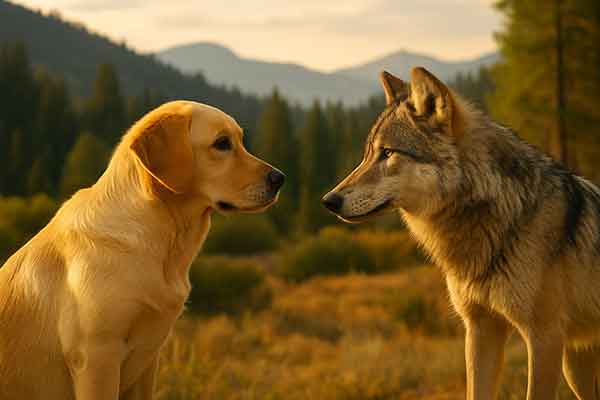How Long Have Dogs Been Around? | A Deep Dive into Canine History
Dogs are often called “man’s best friend,” but how long has that friendship truly lasted? Understanding how long dogs have been around involves looking deep into the past—into the ice ages, early human settlements, and the evolutionary transition from wild wolves to loyal pets.
This article explores the incredible history of dogs: their origins, domestication, roles in human societies, and the evolutionary journey that made them the beloved animals we know today.
Table of Contents
- The Origin of Dogs
- Timeline of Dog Domestication
- How Dogs Evolved from Wolves
- Earliest Archaeological Evidence of Dogs
- Dogs in Ancient Civilizations
- The Role of Dogs in Modern History
- Evolution of Dog Breeds
- FAQ
The Origin of Dogs
The domestic dog (Canis lupus familiaris) is believed to be a subspecies of the gray wolf (Canis lupus). Genetic and archaeological evidence suggests that dogs were the first animals ever domesticated by humans, long before sheep, goats, or cattle.
But exactly when did dogs first appear? Scientists estimate the domestication of dogs began anywhere from 20,000 to 40,000 years ago, during the Upper Paleolithic period. This makes dogs one of humanity’s oldest companions.
Timeline of Dog Domestication
The process of turning wild wolves into friendly dogs didn’t happen overnight. Here’s a simplified timeline:
- ~40,000 years ago: Earliest divergence between wolves and dogs begins.
- ~30,000 years ago: Human-wolf interaction intensifies during hunter-gatherer societies.
- ~15,000 years ago: Clear archaeological evidence of domesticated dogs in Eurasia.
- ~9,000 years ago: Dogs found buried with humans in archaeological sites.
- ~4,000–6,000 years ago: Dogs depicted in Egyptian, Mesopotamian, and Chinese art.
Dog domestication was a gradual process driven by mutual benefit—early wolves may have scavenged near human camps, while humans benefited from protection, hunting assistance, and companionship.
How Dogs Evolved from Wolves
The transition from wolf to dog involved significant behavioral and physiological changes. Compared to wolves, early domesticated dogs were:
- Less aggressive and more social
- Better able to read human cues and expressions
- More willing to live near or with humans
This process is sometimes called self-domestication—wolves that were more tolerant of people had better access to food and survived longer, passing those traits on to future generations. Over thousands of years, these proto-dogs became genetically and behaviorally distinct.
Earliest Archaeological Evidence of Dogs
Some of the oldest dog remains have been found in:
- Bonn-Oberkassel, Germany – A dog burial site dated to around 14,200 years ago.
- Goyet Cave, Belgium – Remains suggest domesticated dog-like canines around 31,000 years ago.
- Ust’-Ishim, Siberia – Genetic studies show divergence between dog and wolf DNA around 23,000 years ago.
These findings support the idea that domestication likely occurred in multiple regions across Europe and Asia, possibly more than once.

Dogs in Ancient Civilizations
By the time civilizations began to form, dogs were already integrated into human societies. They served as:
- Hunters – Egyptian pharaohs used dogs for game hunting.
- Guards – Romans used mastiff-type dogs to guard homes and temples.
- Companions – Chinese nobles kept toy breeds like the Pekingese.
- Spiritual figures – The Aztecs believed Xoloitzcuintli dogs guided souls to the afterlife.
Dogs also appear in mythologies, such as Anubis in Egypt (a jackal-headed god) and Cerberus in Greek mythology (the three-headed guard dog of Hades).
The Role of Dogs in Modern History
In more recent centuries, dogs became more specialized in roles like herding, sledding, and search and rescue. For example:
- Medieval Europe: Hounds used for hunting and guarding castles.
- 18th–19th centuries: Dogs bred for specific tasks like ratting (e.g., terriers) or herding (e.g., collies).
- World Wars: Dogs served as messengers, search-and-rescue, and morale boosters for troops.
Today, dogs serve in law enforcement, therapy, military operations, and even medical detection (like sniffing out cancer or COVID-19).
Evolution of Dog Breeds
The massive variety of dog breeds we see today is a result of selective breeding, most of which occurred over the past 200 years. The AKC currently recognizes nearly 200 breeds, ranging from the tiny Chihuahua to the towering Great Dane.
Each breed was developed for specific traits—speed, strength, size, intelligence, or temperament—to perform jobs or meet aesthetic standards.
Modern mixed breeds (often called “mutts” or designer breeds like Labradoodles) continue the evolutionary story of dogs as adaptable, diverse companions.
FAQ
When did dogs first appear?
Dogs are estimated to have appeared around 20,000–40,000 years ago, evolving from gray wolves through a process of domestication and natural selection.
Were dogs the first domesticated animal?
Yes, dogs are widely believed to be the first animals domesticated by humans—long before livestock or horses.
How did dogs become so different from wolves?
Through thousands of years of behavioral selection, wolves that were friendlier and more cooperative with humans became genetically distinct. Selective breeding further shaped them into modern dogs.
Where were dogs first domesticated?
The exact location is debated. Evidence points to multiple domestication events in Europe, Siberia, and East Asia, making it a complex and global process.
How many dog breeds exist today?
There are over 340 dog breeds worldwide, though the American Kennel Club (AKC) officially recognizes nearly 200 of them.
Conclusion
So, how long have dogs been around? Based on current research, dogs have been with humans for at least 20,000 years, possibly even longer. They’ve shared our campsites, hunted alongside us, guarded our homes, and now rest comfortably at our feet or on our couches.
From wild wolves to working partners to loving pets, the journey of the dog is one of the oldest and most successful stories of domestication in human history. Understanding this deep-rooted bond gives us a richer appreciation of why dogs remain such important members of our families today.





